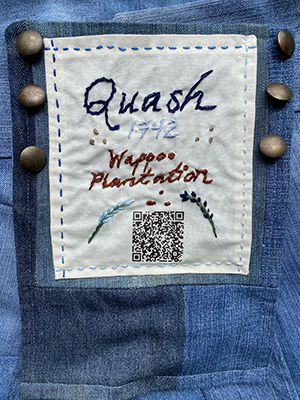Quash
 Lev Sewald ’26 and Liam Delaney ’26
Lev Sewald ’26 and Liam Delaney ’26
Most histories about the first successful indigo crop in North America never mention the man who made it possible. John Quash Williams was born in the colony of South Carolina sometime between 1720-25 to an enslaved African mother and an unknown white father. Quash translates to “Sunday” in several West-African languages and follows the African tradition of naming children based on which day they were born. He grew up enslaved on the Wappoo Plantation, the 600-acre farm three miles southwest of Charleston owned by John Lucas. Lucas died in 1729 and left everything he owned, including Quash, to his son George Lucas, a lieutenant colonel in the British Army stationed in Antigua. George moved his family from the West Indies to Charleston, whereupon he bought more land and was then recalled back for duties, leaving his 16-year-old daughter Eliza in charge of his three plantations.
Eliza’s vast correspondences show how greatly she depended on Quash and valued his knowledge and skills. He assisted her with her indigo experiments, enlisting the help of other enslaved workers who knew the secrets of cultivating and distilling indigo from their farms in Africa or the West Indies. In 1744 George Lucas wrote to Charles Pinckney requesting Quash use his carpentry skills to help her: “I therefore Desire Quashe may be put immediately to make an Indigo Work, of the same Dimentions with the Brick one at Wappo, on Garden Hill plantation.” After Quash built these indigo vats on all of the Lucas plantations, their profits soared. Eliza shared her newfound knowledge with neighboring plantation owners who then doubled their income every three years, mostly because they didn't have to pay for labor. By the end of the Indigo Bonanza in 1775, South Carolina was exporting over 1 million pounds of indigo annually, with a present-day value of over $30 million. By the time of the American Revolution, people resorted to trading in indigo rather than worthless American dollars.

After Charles Pinckney married Eliza in 1744, he made Quash his master carpenter in building his new stately home. Not only did Quash complete a majority of the gorgeous woodwork himself, but he supervised the other men- seven enslaved carpenters and one white man. When he finished, Quash had built one of the first Palladian villas in Charleston and been emancipated by Mr. Pinckney. Two months later, Quash became a landowner himself and built his own house for his wife Molly and their three children.